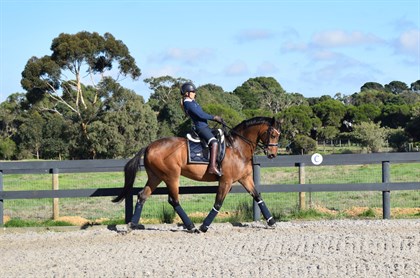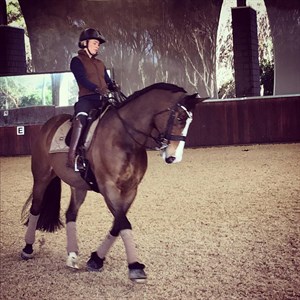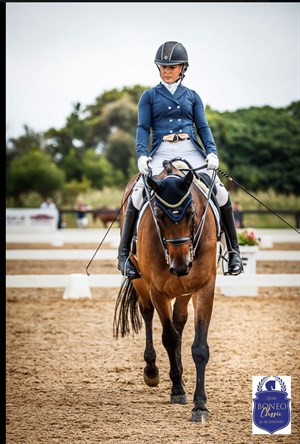
It's important to incorporate plenty of transitions into your work at home (Image: Emma Booth and Zidane).
© Equestrian Stockholm
By Emma Booth
Transitions, transitions, transitions! We’ve heard it once, we’ve heard it a million times, but still we could all hear it a million more. In training, there is no doubt in my mind that we have to ride a million and one transitions. The old saying goes that practice makes perfect. In the case with horse and rider, it is about physical strength and the level of control the horse has as well, so the more times their body practices a move, the more muscle memory they are going to have to ultimately be able to execute said movement correctly or better.
The difficult thing with equestrian sport is that there are two pieces to the puzzle – there is a horse, and a rider — and the challenge is getting the correct result from the exact request at the right time. Therefore, the more we can practice transitions, which is in principle — getting a reaction from a cue — the better the work is going to be.
Transitions are going to enable your horses to use themselves appropriately, carry themselves properly and make the job easier for you. The aim in dressage at the end of the day is to make the work look effortless, so the easier it is for the horse physically, the easier it is for you.
Emma and Sabi (Wasabi Sun) in training.
Photo supplied.
Half transitions are just as effective and important. In any movement we should be able to push the rhythm forward or back when we want. This gives us greater control and means the movement will most likely be ridden more accurately in a test situation. If we can’t ride these half transitions at home, how can we expect to have the best control over each movement when riding a test? We want to feel that we are able to regulate their speed as we want it. By pushing your horse forward and then bringing the rhythm back, whilst keeping your horse engaged and uphill, the strength and quality of work will be noticeably better! Someone once said to me that “Speed is not forward, speed is speed. Forward is about how they feel from your leg (or in my case from my voice). So if you put your leg on and you get an immediate reaction, then they’re thinking forward. If you feel like you have to go ‘kick, kick, kick’ to get them forward, then they’re not really forward.”
When setting your horse up to ride a transition, you have to make sure the rhythm in the pace — or in the movement you are riding — is consistent! We don’t want there to be a change in speed, either faster or slower, directly before the change. The horse needs to be stable in what they are doing. This will lead to a much smoother and stronger transition. This is very important to remember! The other thing is that a lot of the time in training people get slack with their transitions back to walk, because that is usually when they are going to have a break or finish. So often I see people only half riding the last transition back to walk, letting the horse stumble into this downwards movement and giving the rein before the transition is even finished. I can’t reiterate enough, how important it is to be very accurate when riding the transition back to walk. It’s easy to get into bad habits but this can teach your horse bad habits also. Again, if you’re not riding these transitions properly EVERY time at home, how can we expect them to score well when ridden in a test?
The transition to walk should always be ridden correctly - even when it's the last transition of the ride!
© Stephen Mowbray
We are all guilty of not riding enough transitions — myself included — and that’s why I chose to write this small piece specifically focusing on transitions, because I don’t think we can be reminded enough!
READ THE LATEST NEWS ARTICLES HERE
https://www.equestrianlife.com.au/articles/BLOG-Transitions-transitions-transitions__


